A reference listing of logos from the many ironwork foundries that shaped the look of American main street storefronts in the late 1800s
This blog post is intended for use as a reference and will be updated periodically
In the late 1800s and early 1900s, American main streets were built with ornate ironworks façades made by the Mesker Brothers and several others.
As a photographer who shoots a lot of historic architecture and abandoned buildings, I see a lot of these old storefronts in cities and small towns. Sometimes, the ornate façades are painted and well-maintained. Often they are rusty and in poor condition. Too often, they’re demolished. Whenever possible, I try to document the companies by snapping a shot of the name plates on the columns.
The Meskers were among the most popular, but certainly not the only manufacturers of architectural iron works. St. Louis alone was home to at least nine major makers.
About the architectural ironworks foundries shown below
Chattanooga Roofing and Foundry Co.
The Chattanooga Roofing and Foundry Co. was established in Chattanooga in 1893 by J. E. Annis (Worthpoint). The company manufactured ironworks storefronts and patent metal shingles and pressed metal ornamental ceilings, but their imprint has also been found on household products such as cast iron bread pans, pots and kettles, chimney clean out doors, and fireplace grates made as late as the 1930s. A listing from a rare book seller offering a Chattanooga Roofing and Foundry Co. 1910 product catalog says the company made “cornices and moldings, finials, skylights, roofing, heaters and grates, girders, manhole covers, cellar doors, stairways, railings, awnings, and other ornamental and structural metalwork.”
Chickasaw Iron Works
Chickasaw Iron Works was established in Memphis, Tennessee in 1865, and incorporated in 1891. John E. Randle was president at the turn of the century. According to a historic monthly statement document posted online, the mill was located at the N.E and S.E. corners of 2nd and Winchester Streets — an address I was unable to locate on modern maps. They manufactured architectural iron works, cotton ginning outfits, saw mill machinery, machinery supplies, iron and brass castings, engines, boilers, shafts, and pulleys. They also did “steamboat work.”
Christopher & Simpson
The Christopher & Simpson Architectural Iron and Foundry Company was founded on Park Avenue in St. Louis by Jacob Christopher in 1873. He incorporated the company in 1882 with partner W.S. Simpson. (The St. Louis Star-Sayings, 1893, sourced from Studio2108.com)
Christopher & Simpson was one of at least nine foundries making architectural storefronts in St. Louis. St. Louis was a center of iron foundries partly due to its proximity to a vast iron deposit at Iron Mountain in Missouri. But because these storefronts were mail ordered, St. Louis also provided a central location and ready access to shipping via the river and rail lines. (National Building Arts Center)
Huntsville Foundry and Machine Works
Manufacturer located in Huntsville, Alabama.
Geo. L. Mesker and Company Architectural Iron Works
George L. Mesker was one of three brothers, all in the iron works industry. The brothers seem to have made an amicable division of markets. Frank and Bernard Mesker operated Mesker Brothers Iron Works in St. Louis, while George began manufacturing iron storefronts and other architectural elements in Evansville, Indiana in the 1880s. Mesker store fronts were especially popular in the Midwest, but were sold to every state of the union.
Mesker products were marketed by elaborately illustrated annual catalogs, many of which are still available whole or in part online. My, how times have changed — the catalog advises potential customers to “Write for Discounts.”
Page 21 of the 1900 catalog says this about the company: “Our Facilities: We have one of the largest establishments in the United States for the manufacture of Store Fronts. We get out (sic) material in large quantities and carry large stocks, thus bringing the cost of production down to a minimum. We are centrally located, and accessible by rail and river to all the great iron, coal and lumber markets of the country.”
How much did a Mesker store front cost? One of the advantages of a Mesker store front was the affordability. For example, a caption under item No. 1729 in the 1900 catalog says, “A handsome arrangement for a cheap double brick store front. It has cast iron sills, lintels and columns, and galvanized iron lintel cornice, main cornice and pediment. Price of cast iron and galvanized iron work for 32 ft. front, $162.00; 35 ft., $170.65; 38 ft., $179.30. Woodwork and glass extra.”
Livermore Foundry and Machine Company
Livermore Foundry and Machine Company of Memphis was opened by A.S. Livermore in 1874. A native of Kentucky, Livermore moved to Memphis in 1862 to take a position as the superintendent first for the Mississippi and Tennessee Railroad. He held the same position for the Memphis and Little Rock Railroad until resigning to start his namesake foundry.
Price-Evans Foundry Company, Chattanooga
The following is a direct quote from the National Register of Historic Places application for Price-Evans Foundry: “The Price-Evans Foundry was established in 1907 and produced ornamental iron castings. The company gained a reputation for a high-quality product that was quickly distributed due to the foundry’s placement on Chattanooga’s Belt Railway. The foundry was said to have been one of the largest in Chattanooga and surrounding area, lending to the City’s nickname as the Dynamo of Dixie. The period of significance for Price-Evans foundry spans from 1907 to 1971. While the site transitioned from its industrial foundry usage into warehouse storage ca. 1954, it was brought back to its foundry use by Lucey Boiler in 1959 until 2019.” (Source)
The site was listed on the Register in 2021.
Scherpe & Koken Architectural Iron Company
Scherpe & Koken operated in St. Louis from 1870 – 1912 under various names, including Scherpe & Koken Architectural Iron Company; Enterprise Architectural and Ornamental Iron Works & Foundry; Koken Iron Works. The company was absorbed into the American Bridge Company in 1912, by industrialist J.P. Morgan. (Glassian)
W.H. Cheney, Rochester, N.Y.
According to an 1888 book, The Industries of the City of Rochester, W.H. Cheney established the first iron foundry in Rochester in 1838. In 1848, he established the Western New York Architectural Iron Works, which he managed for 32 years. It was located at numbers 190 – 200 South St. Paul Street in Rochester.
Photographs of architectural ironworks logo nameplates listed alphabetically by state
Below are reference photographs from some of the buildings I have encountered, but this is not necessarily all the examples in a given city. I will update this list as new images are made.
Alabama
Ft. Payne
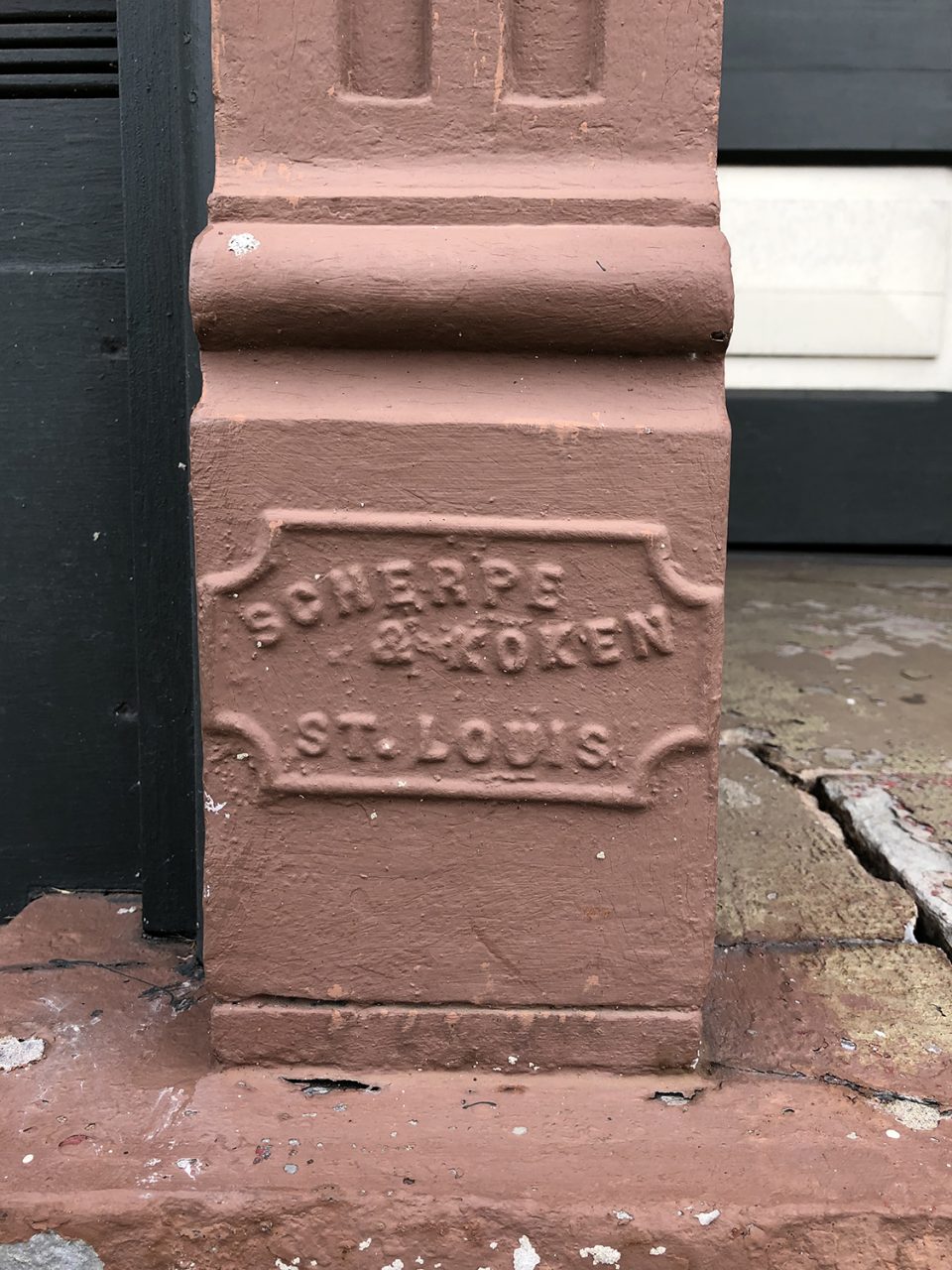
Huntsville
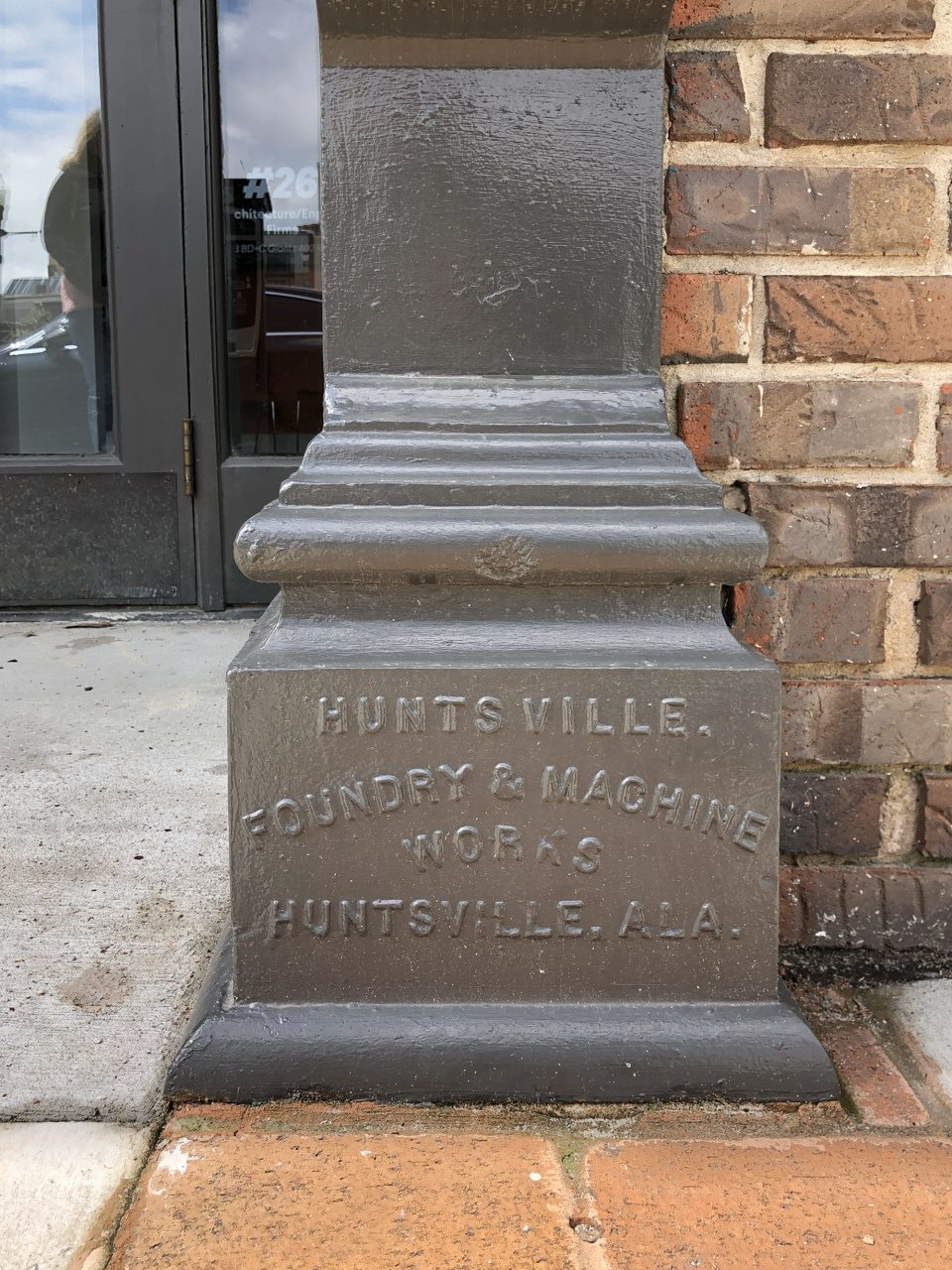
Illinois
McLeansboro
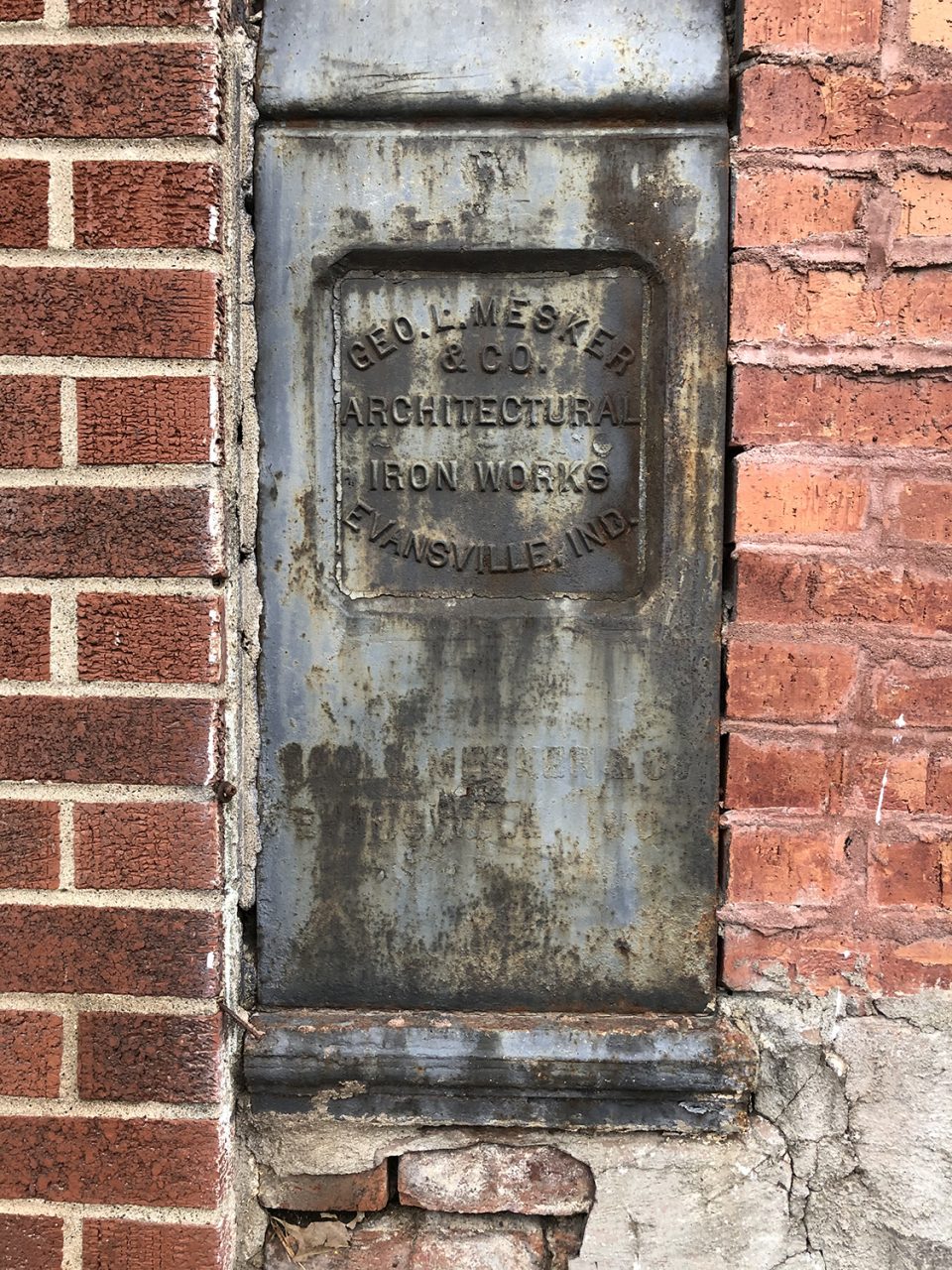
Cairo
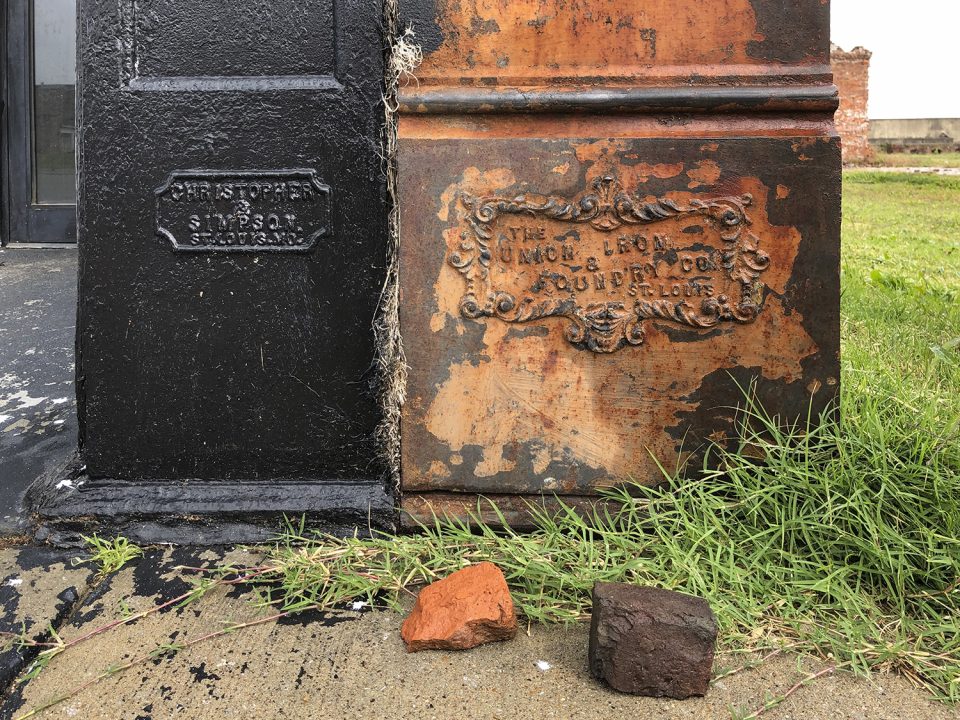
Mississippi
Belzoni
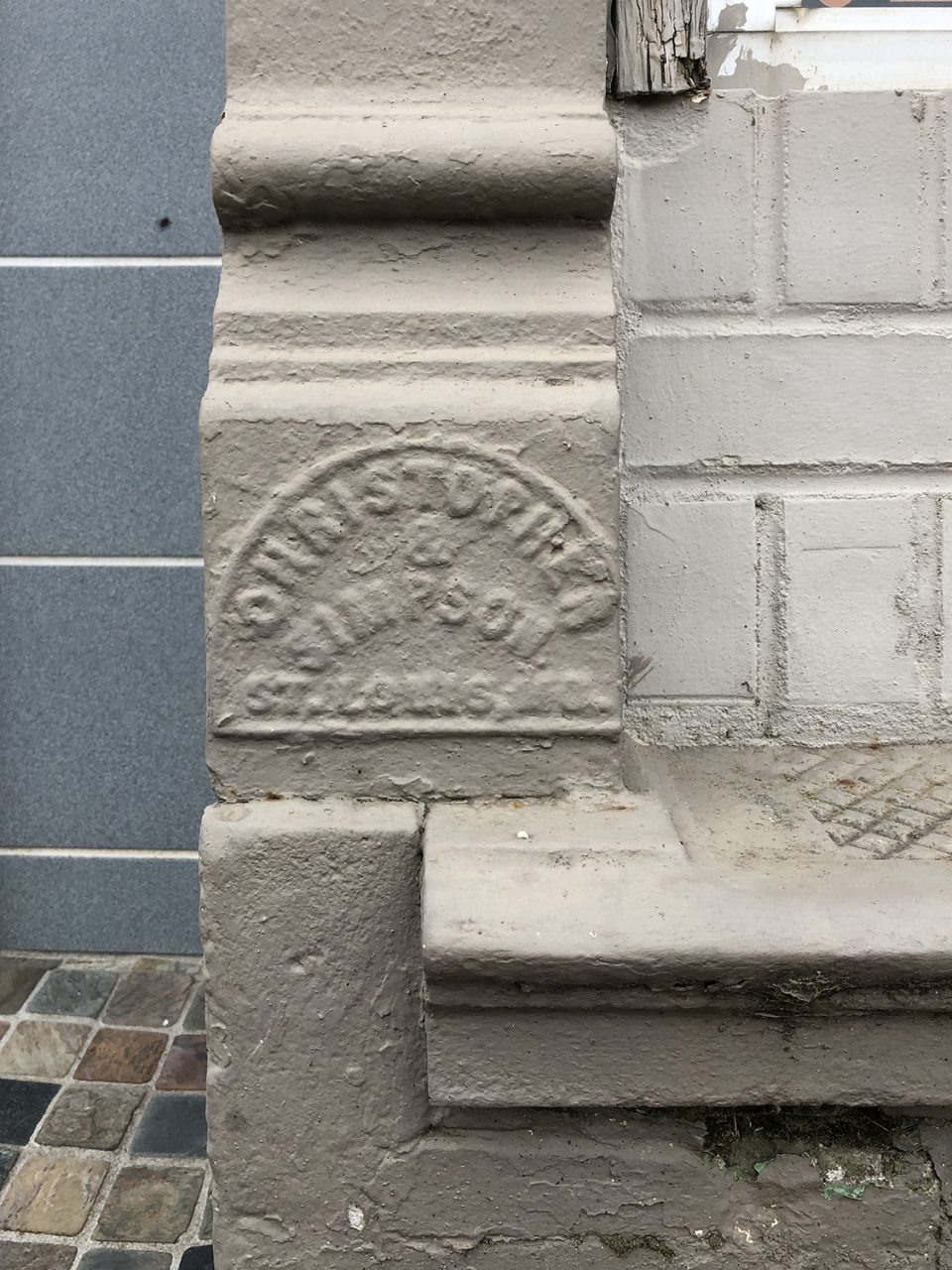
Clarksdale
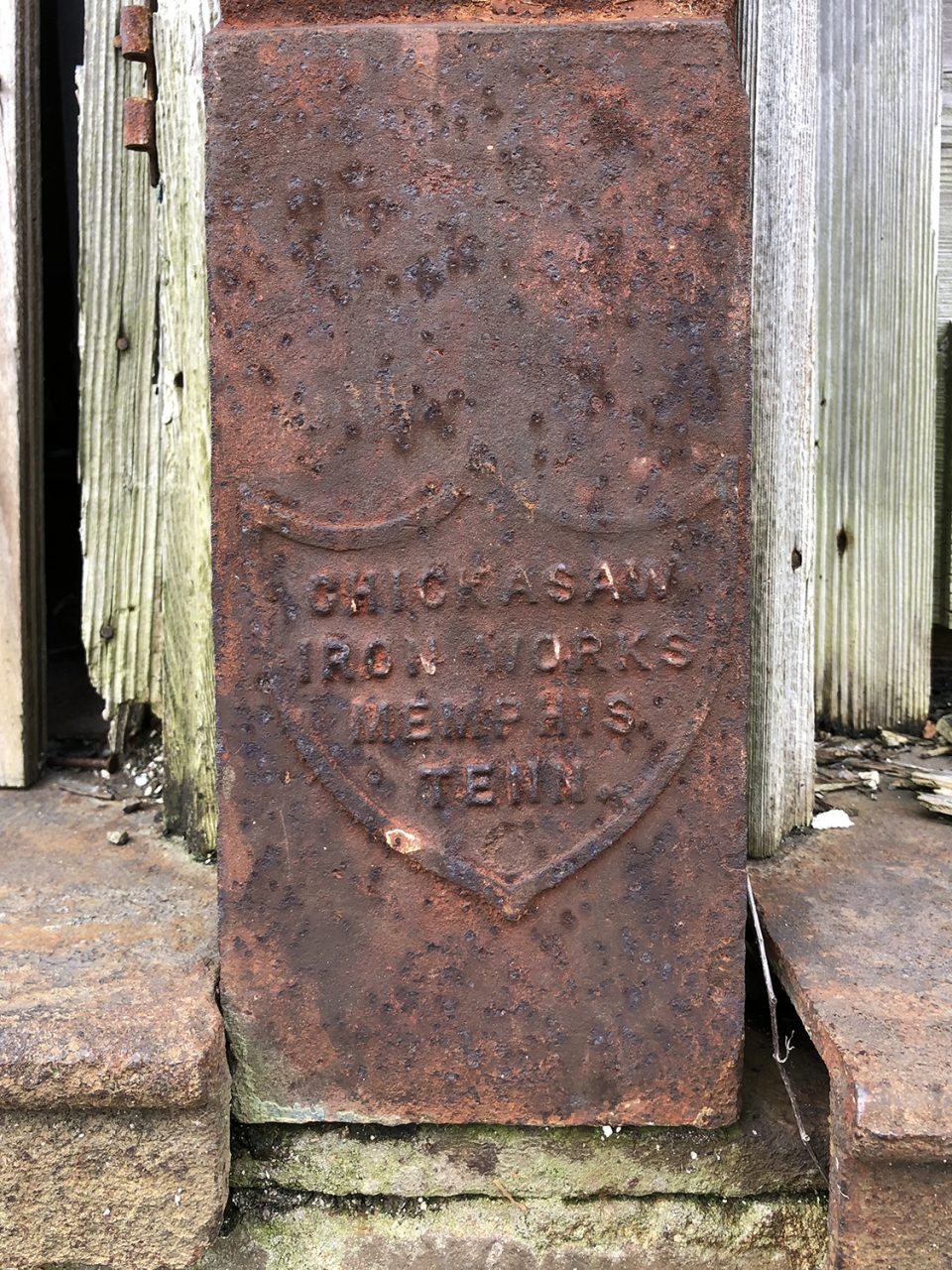
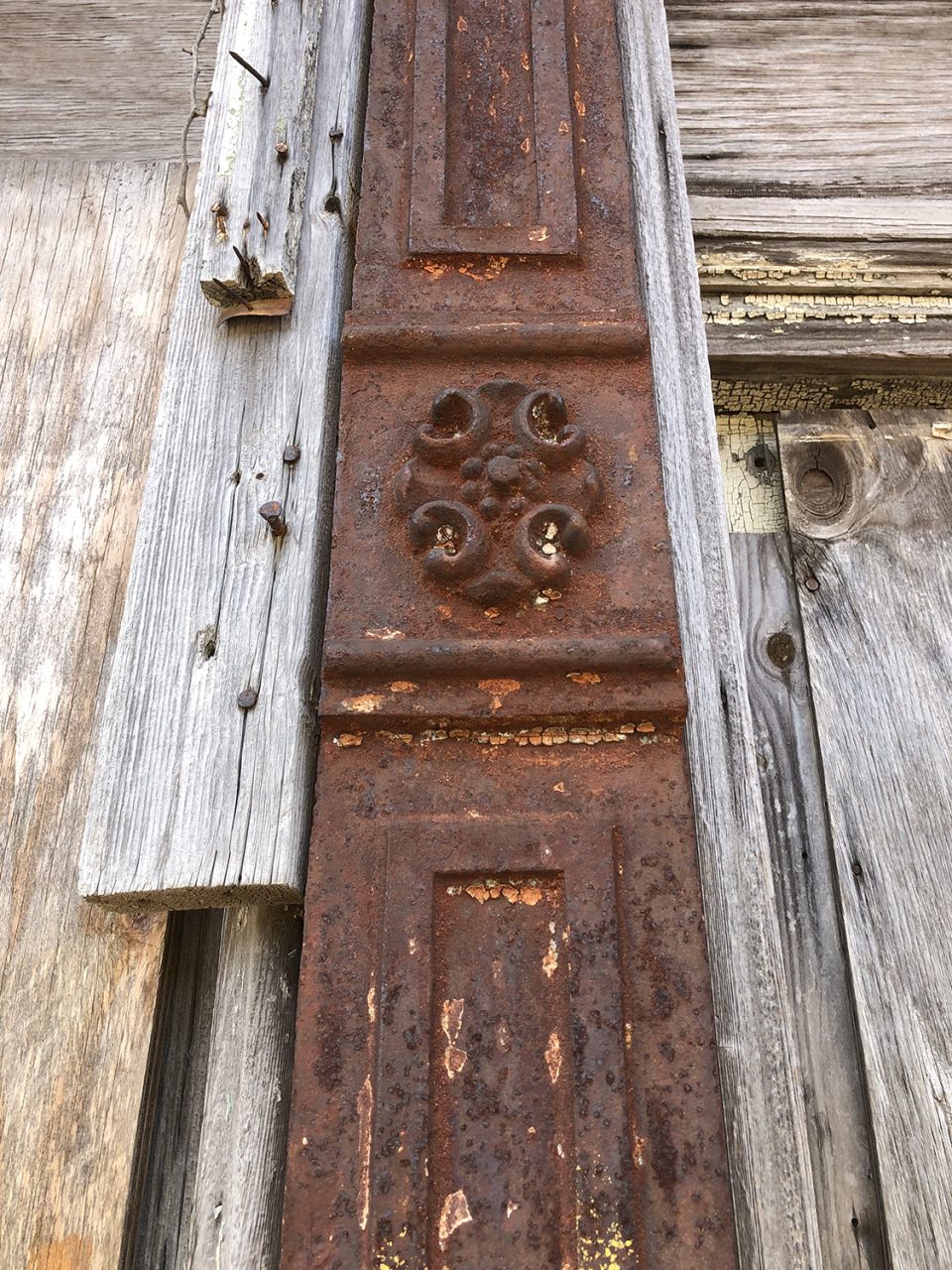
I found this rusty storefront, manufactured in Memphis by Chickasaw Iron Works, at 220 S. Edwards in Clarksdale, Mississippi. This abandoned building is in extremely poor condition and probably won’t stand much longer.
Hattiesburg
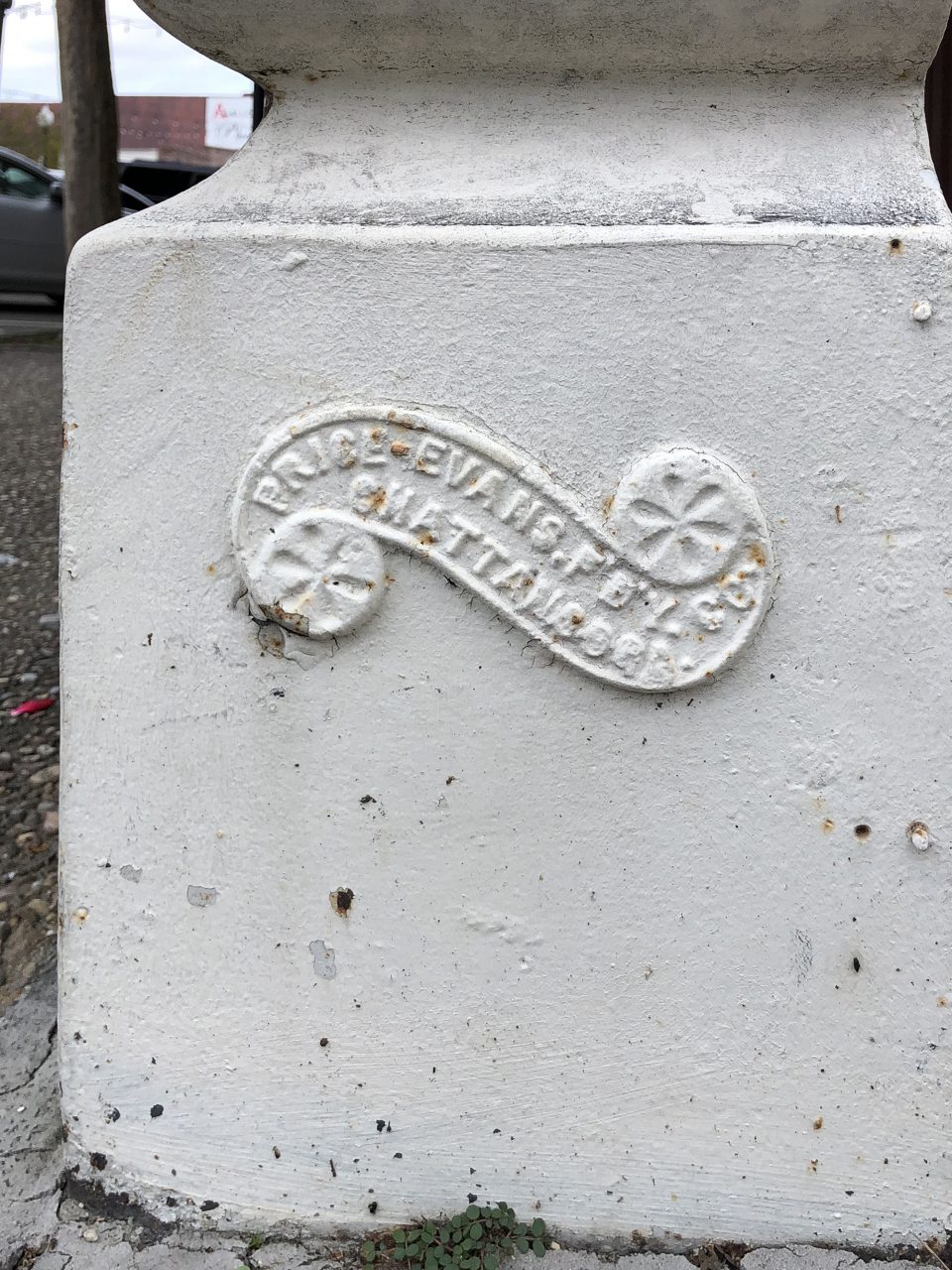
Price-Evans Foundry Company, Chattanooga
Itta Bena
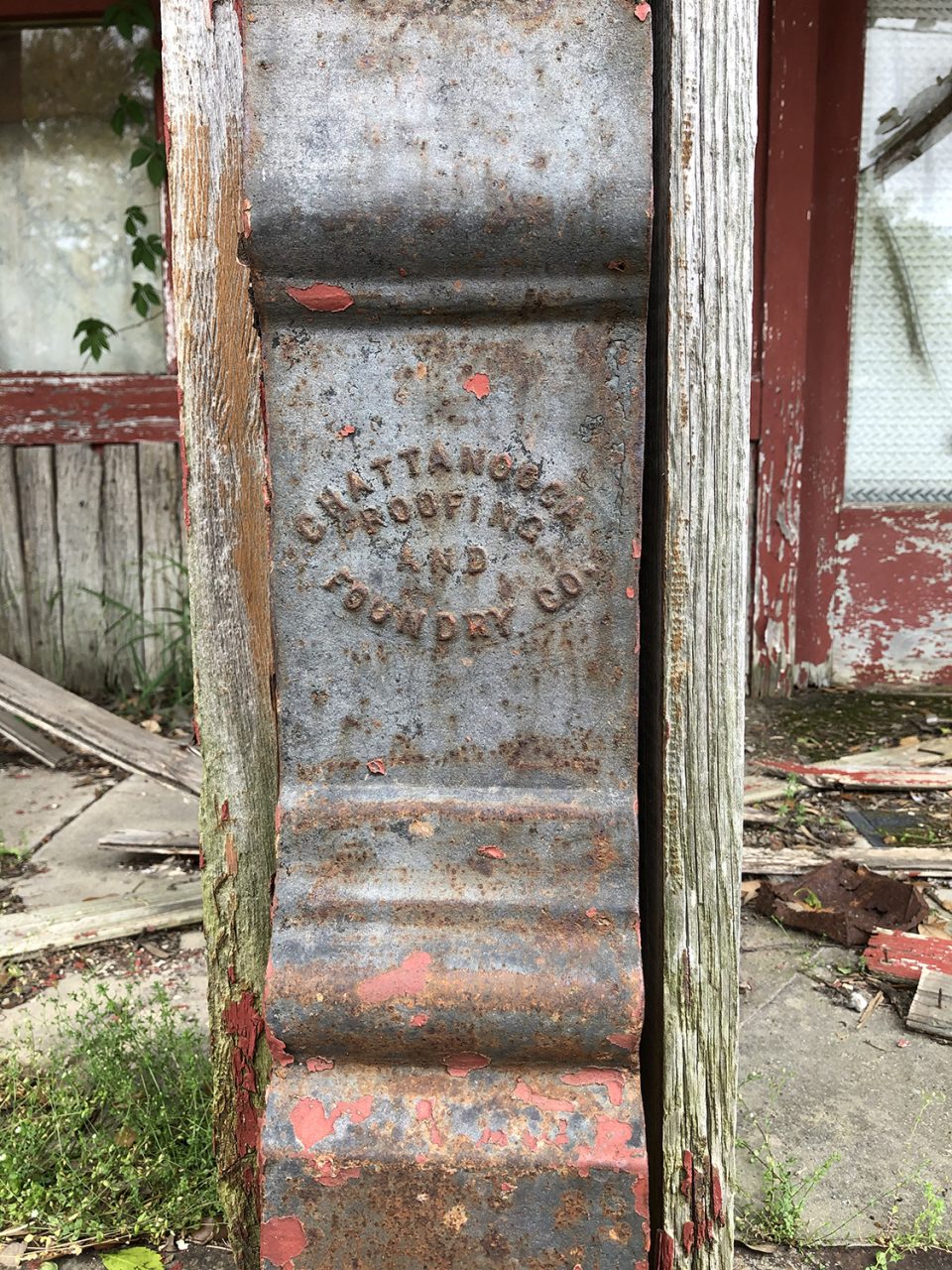
Yazoo City
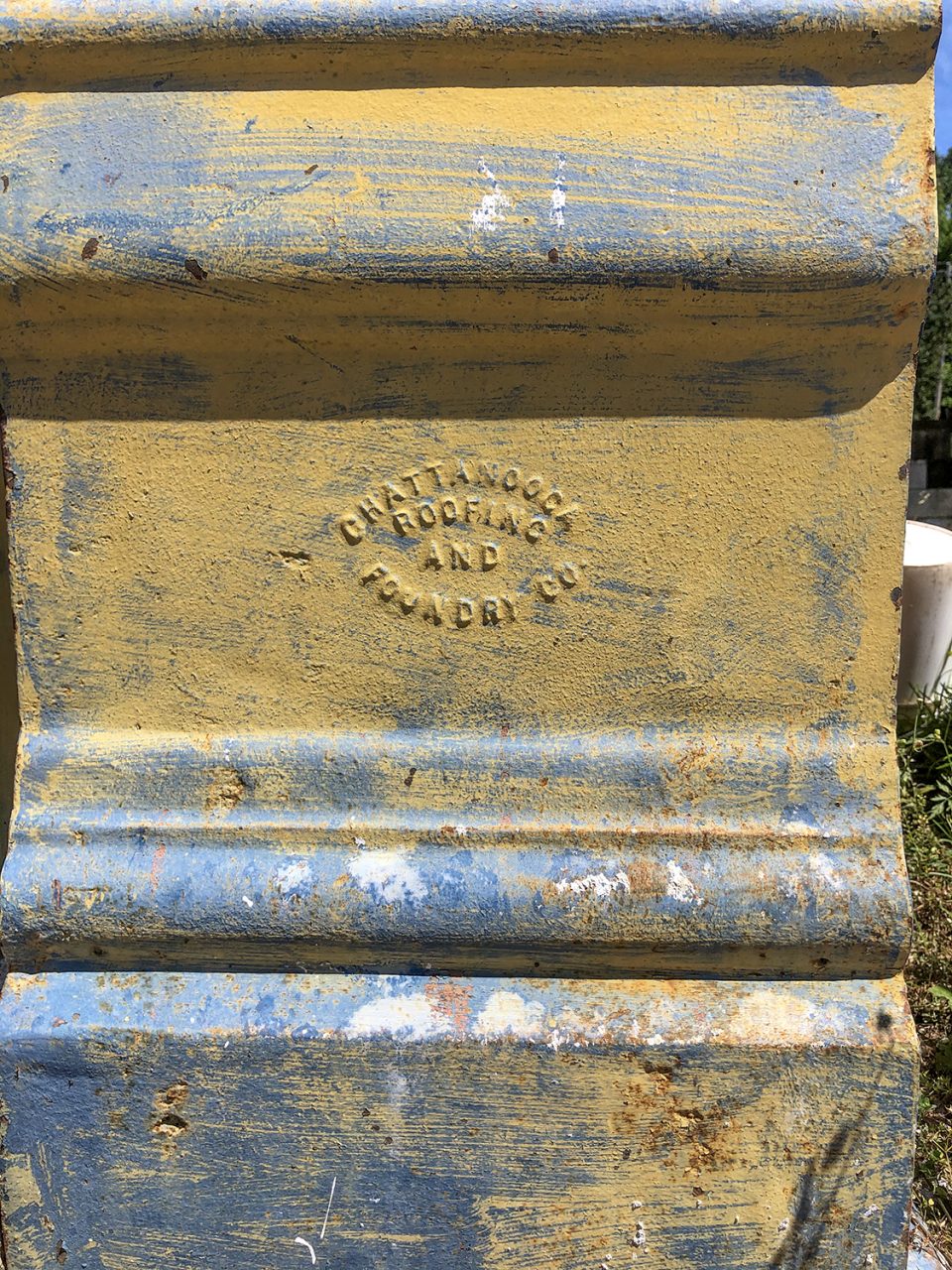
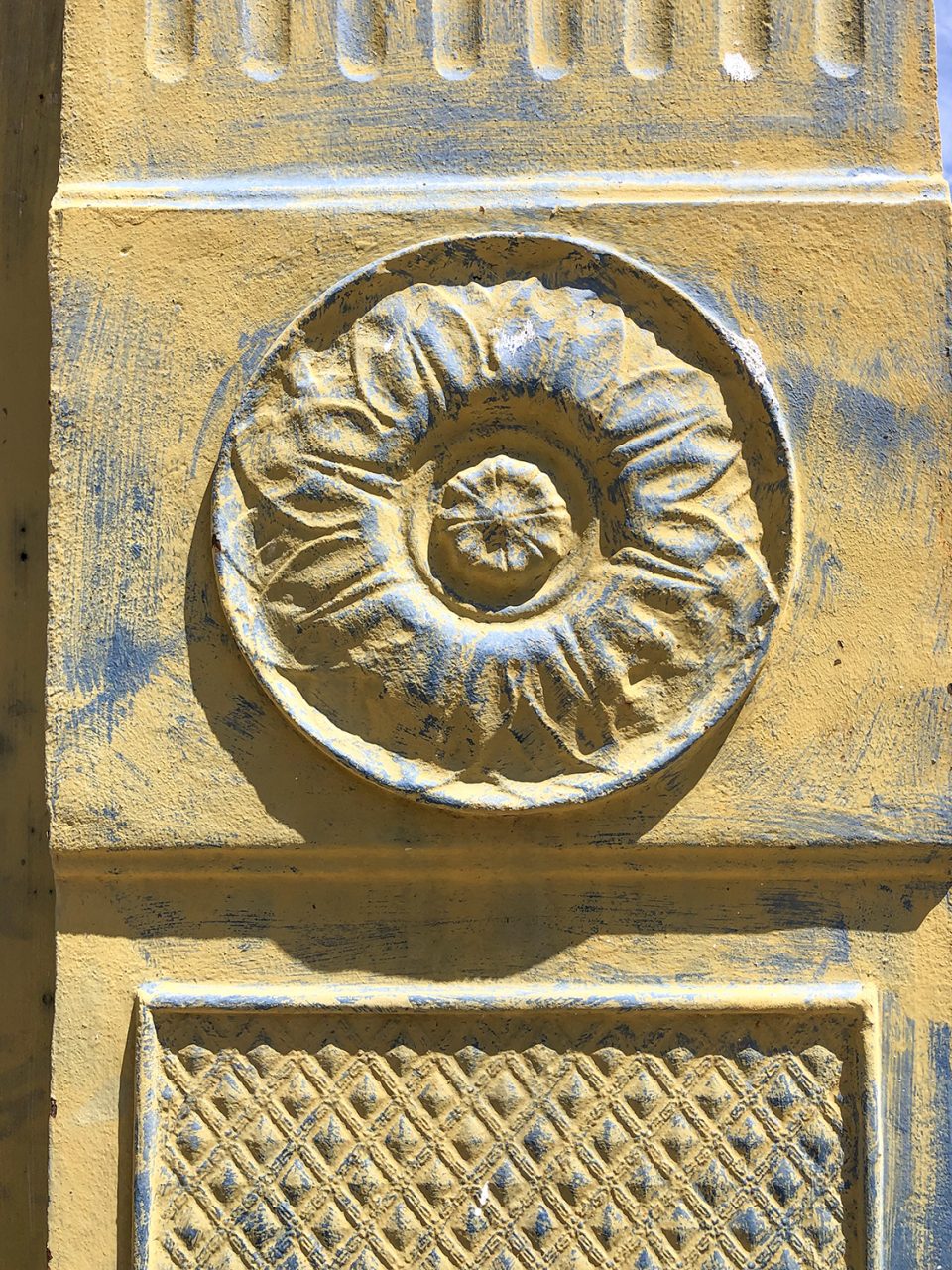
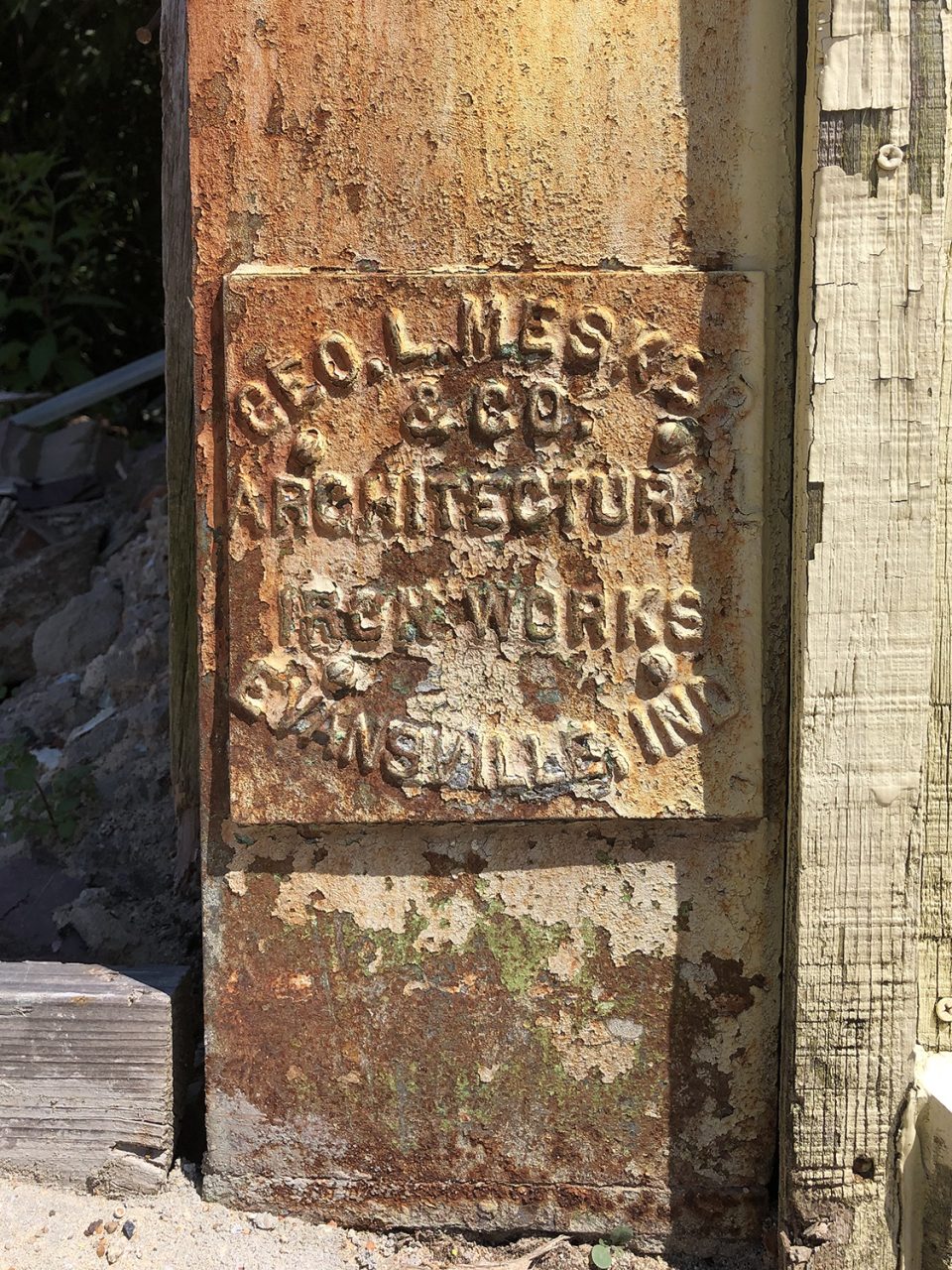
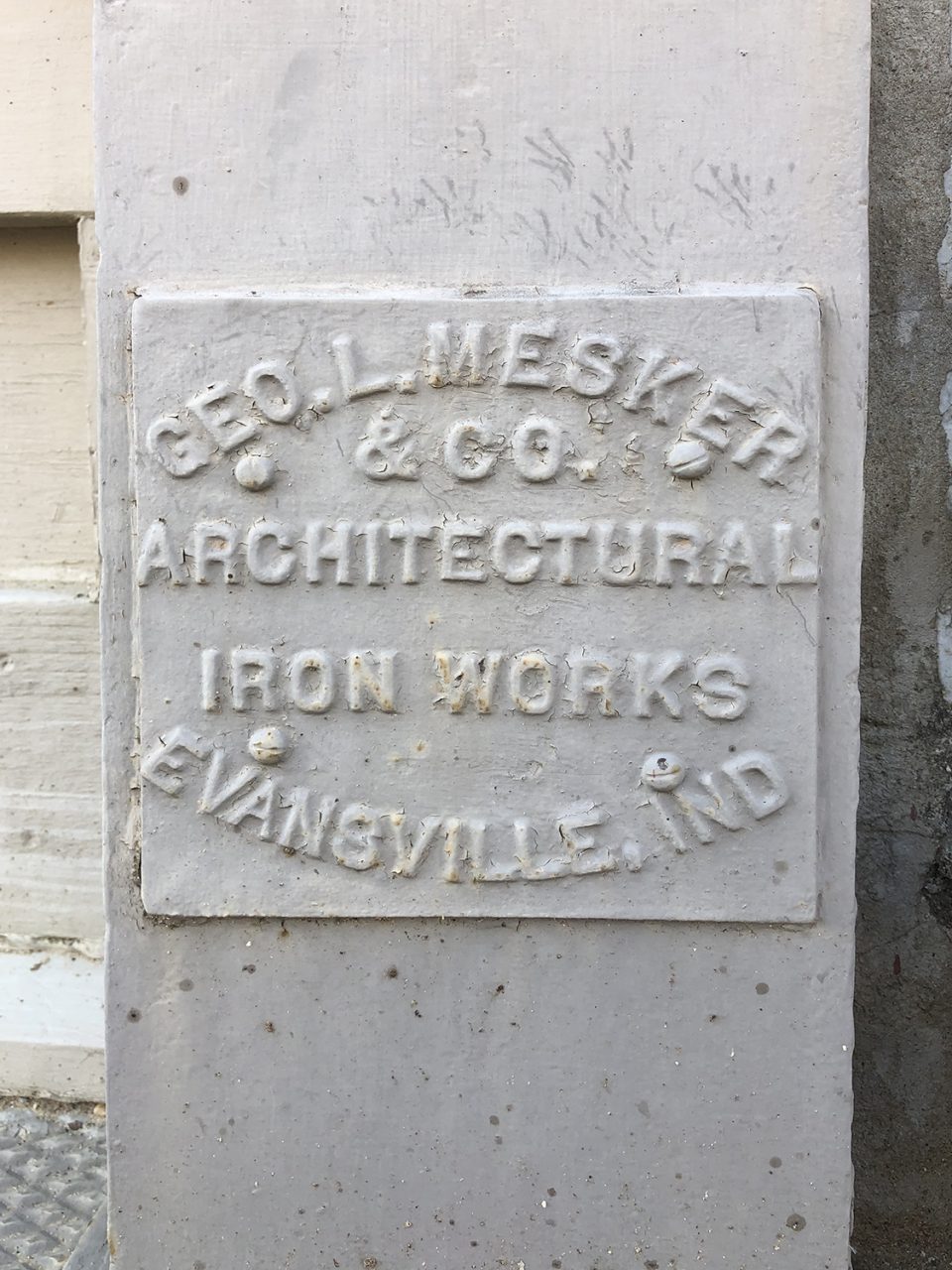
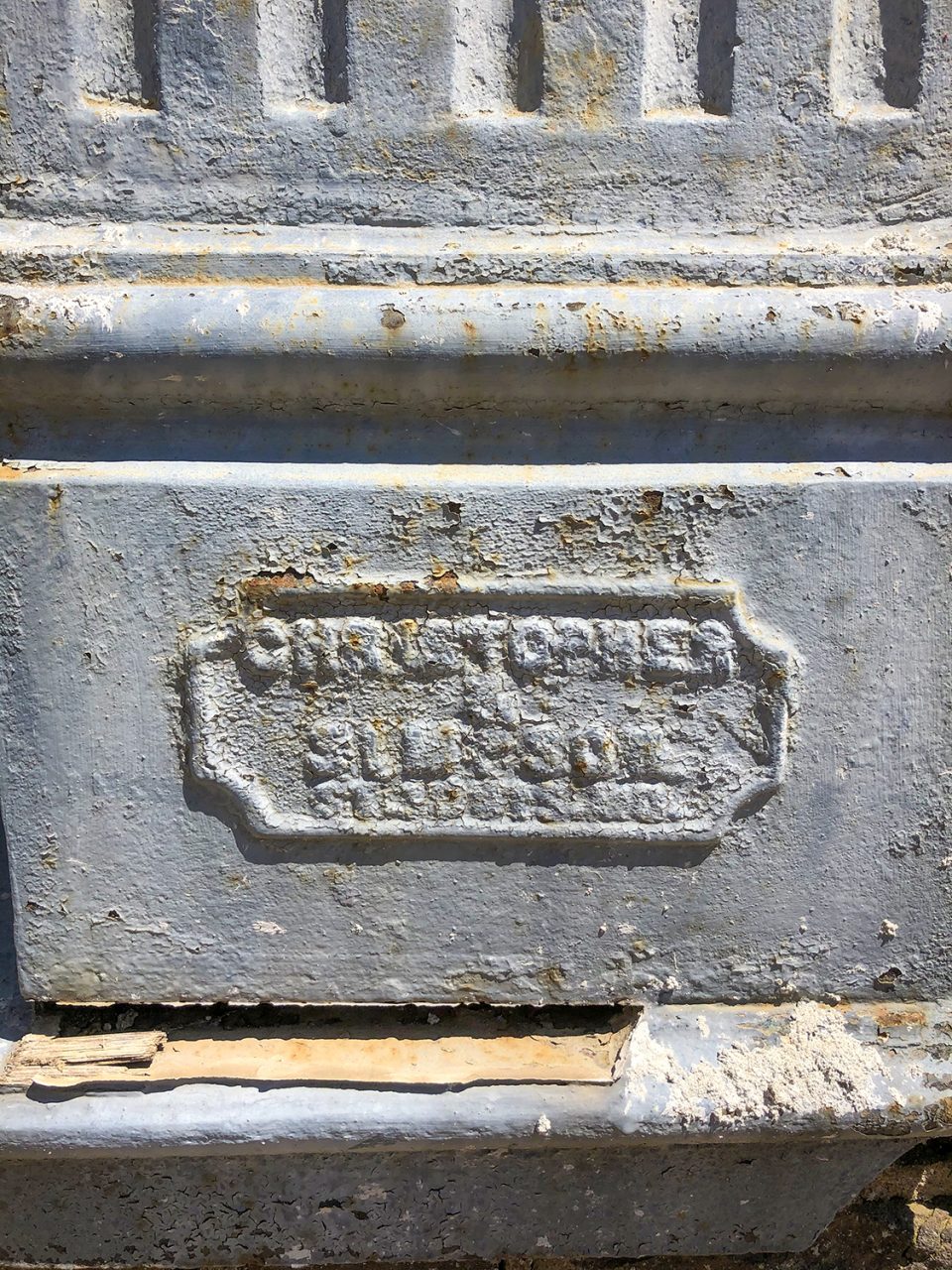
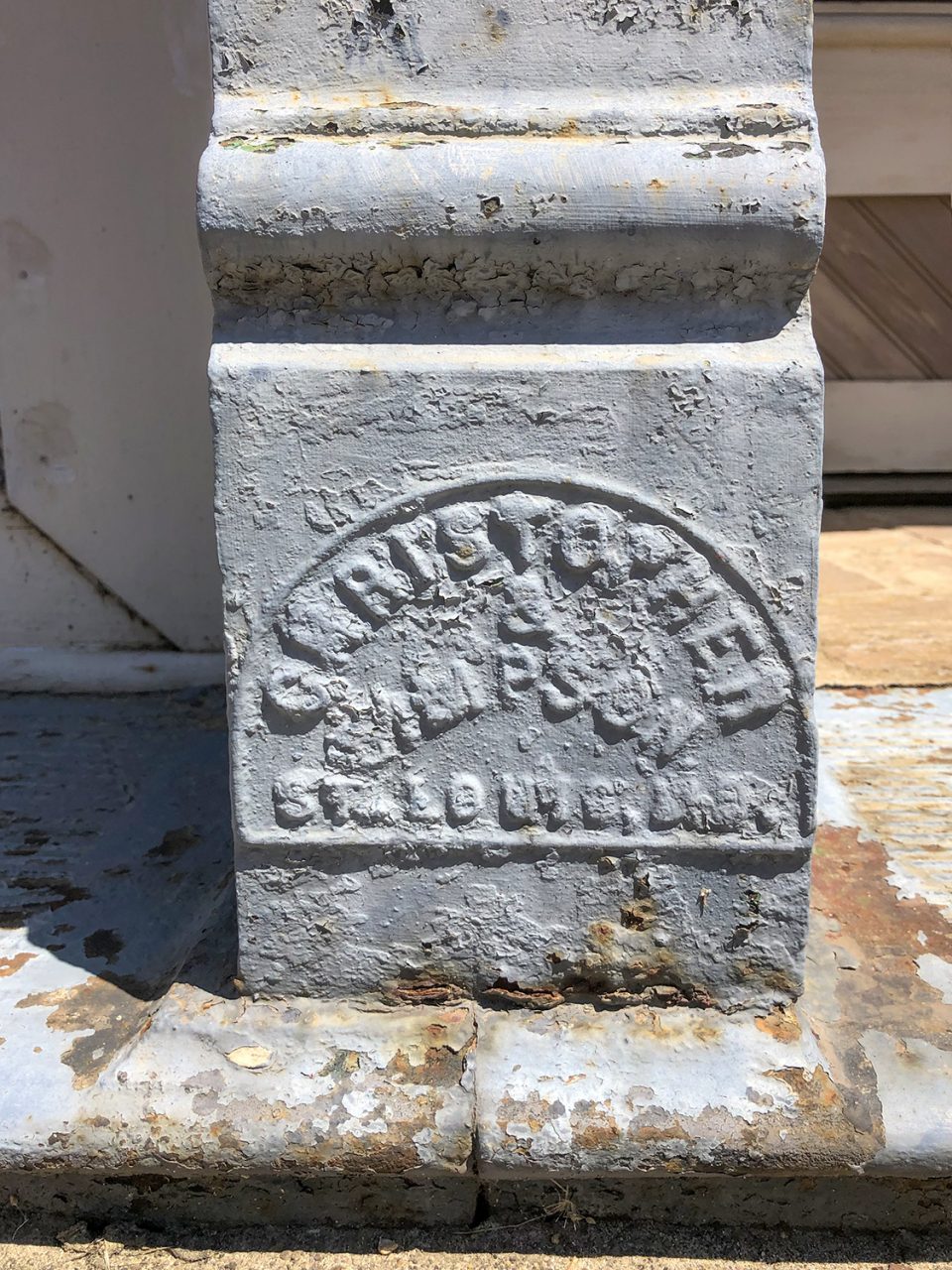
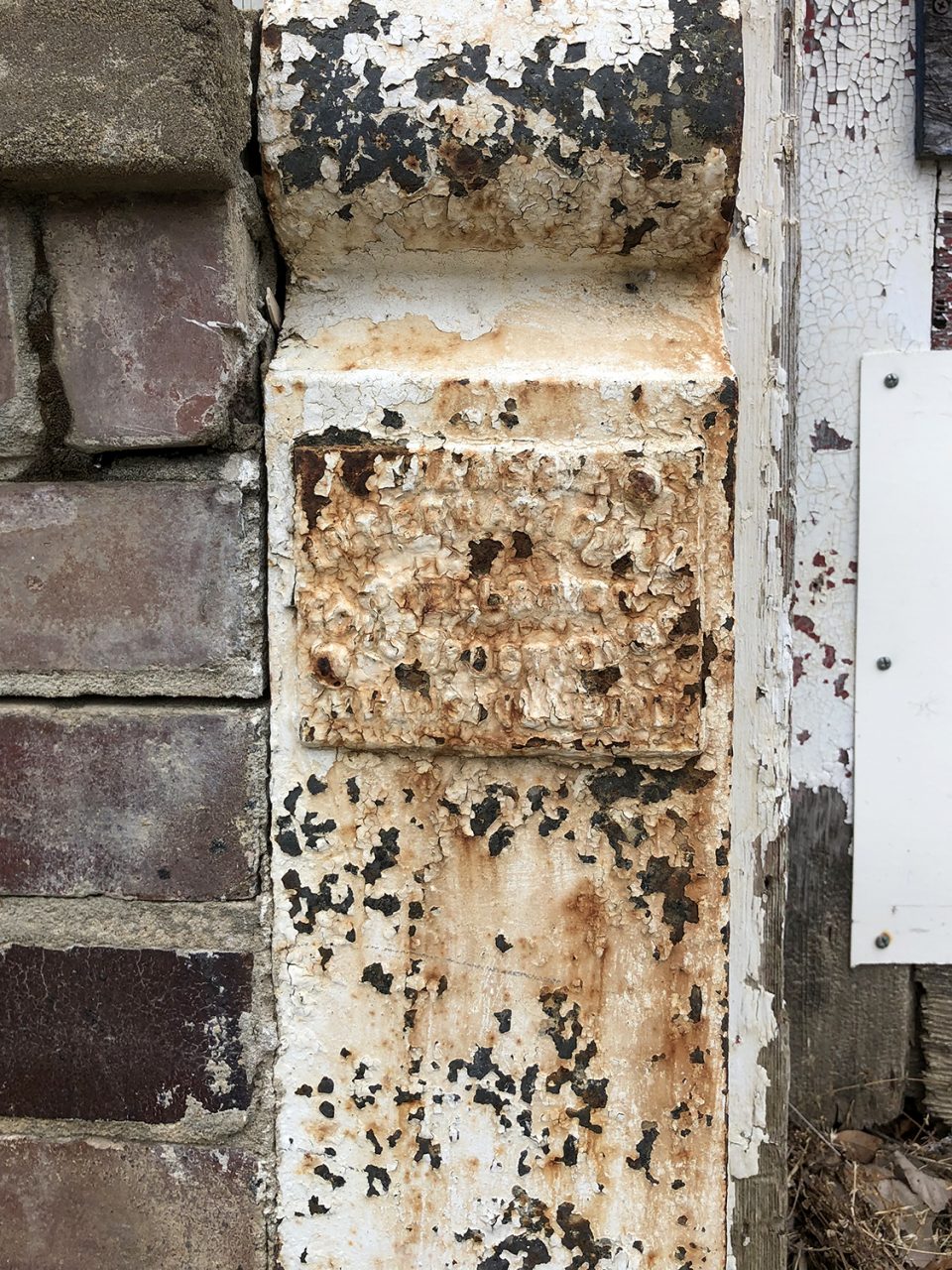
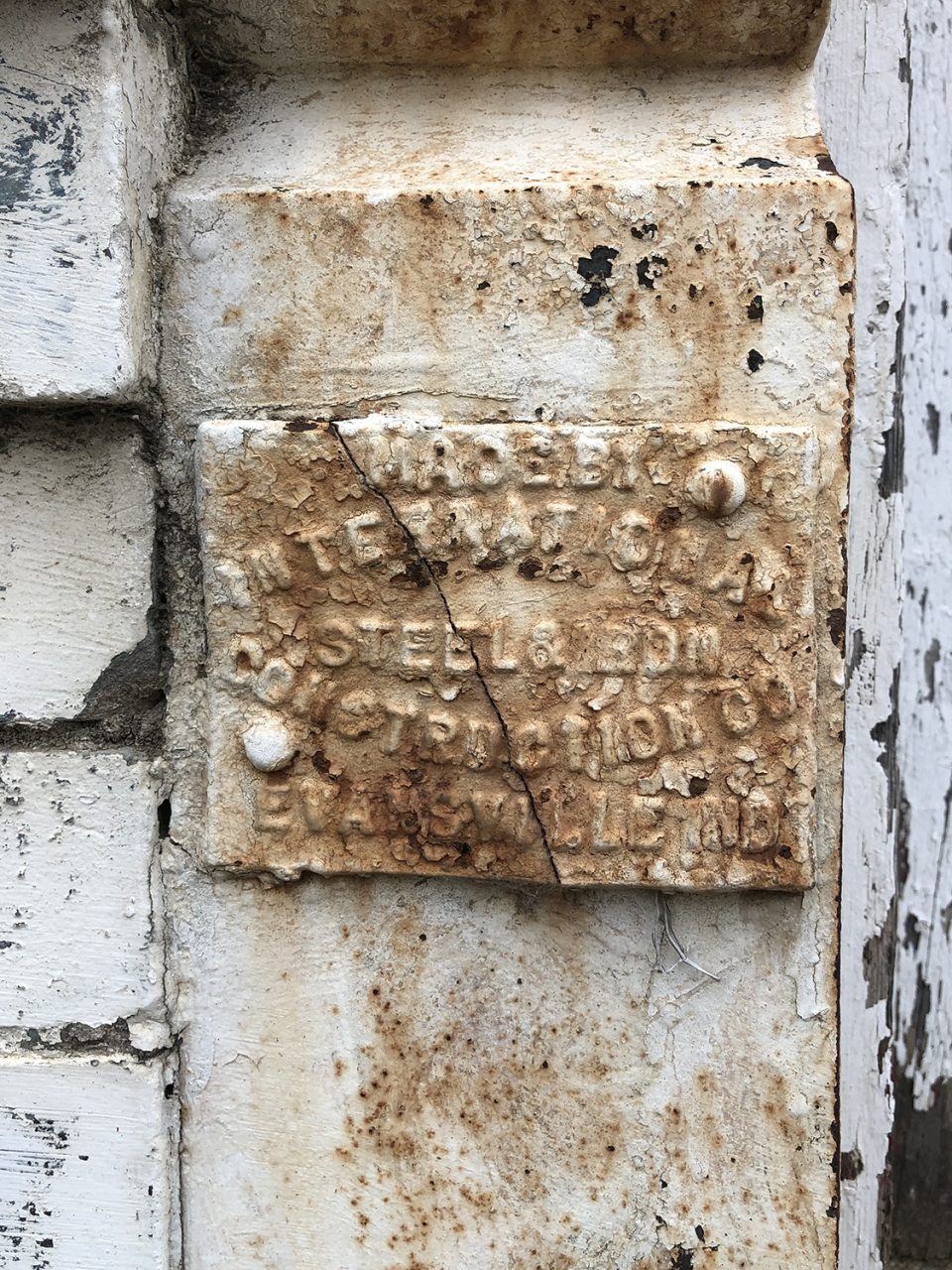
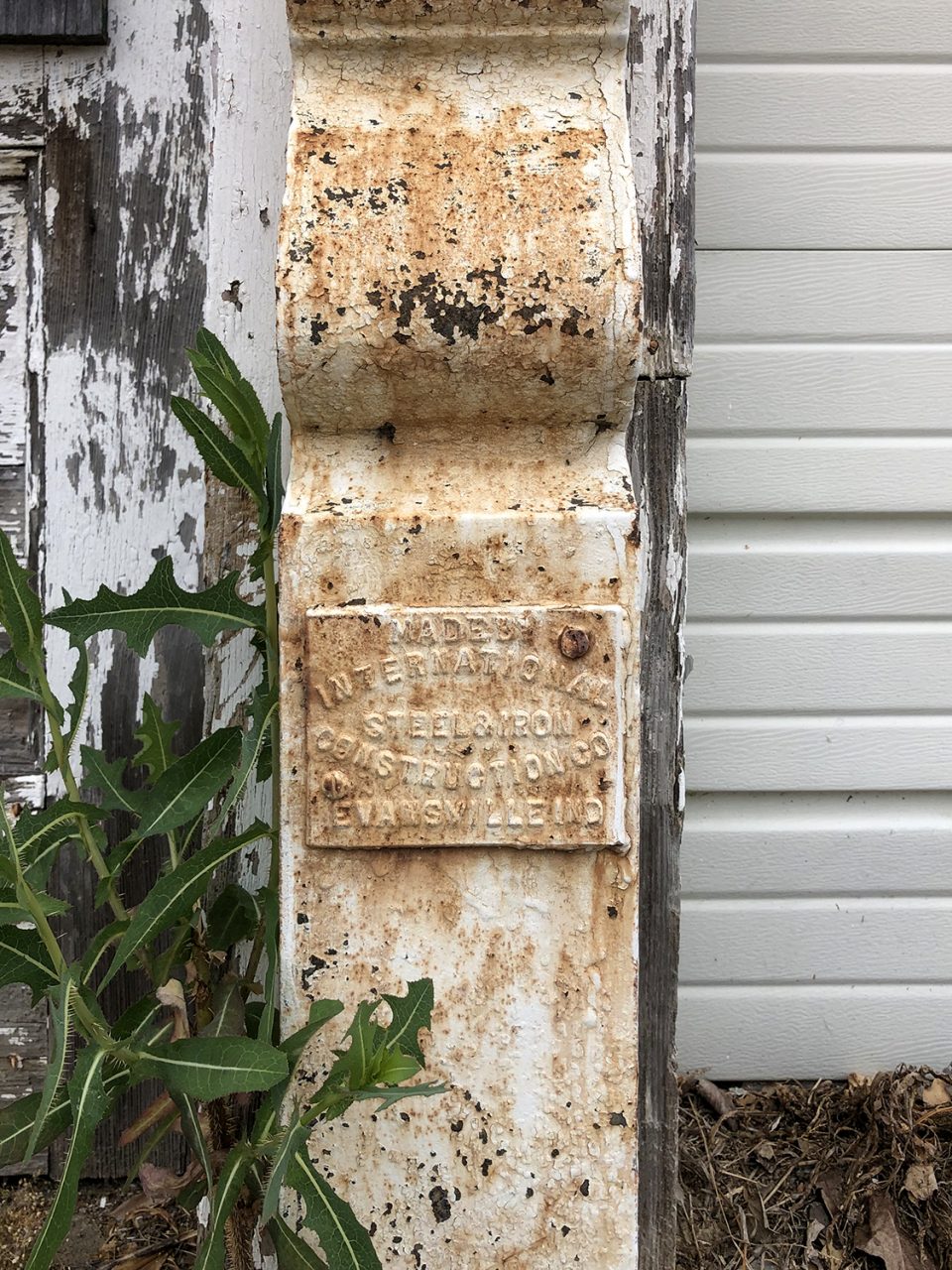
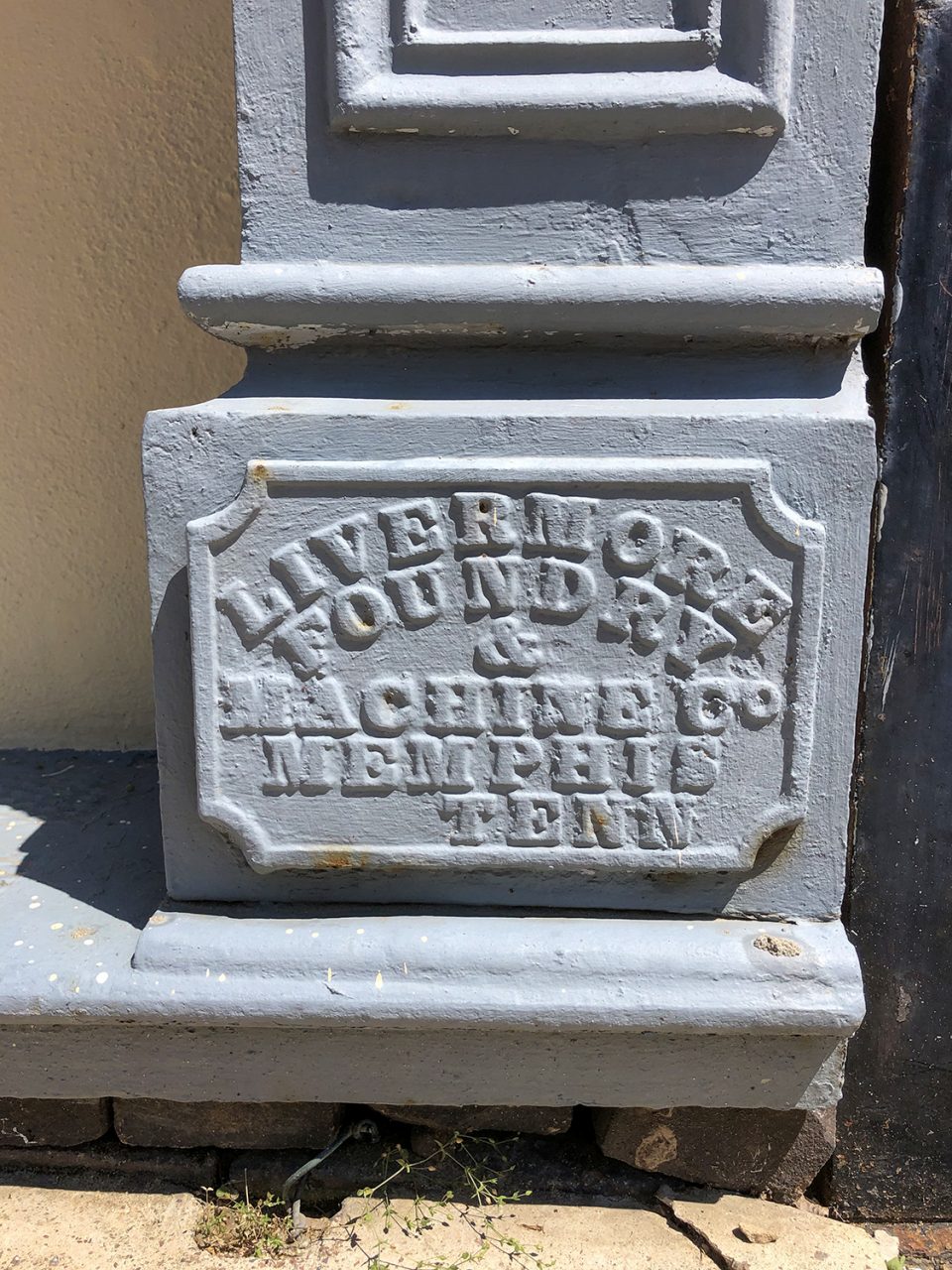
New York
Rochester
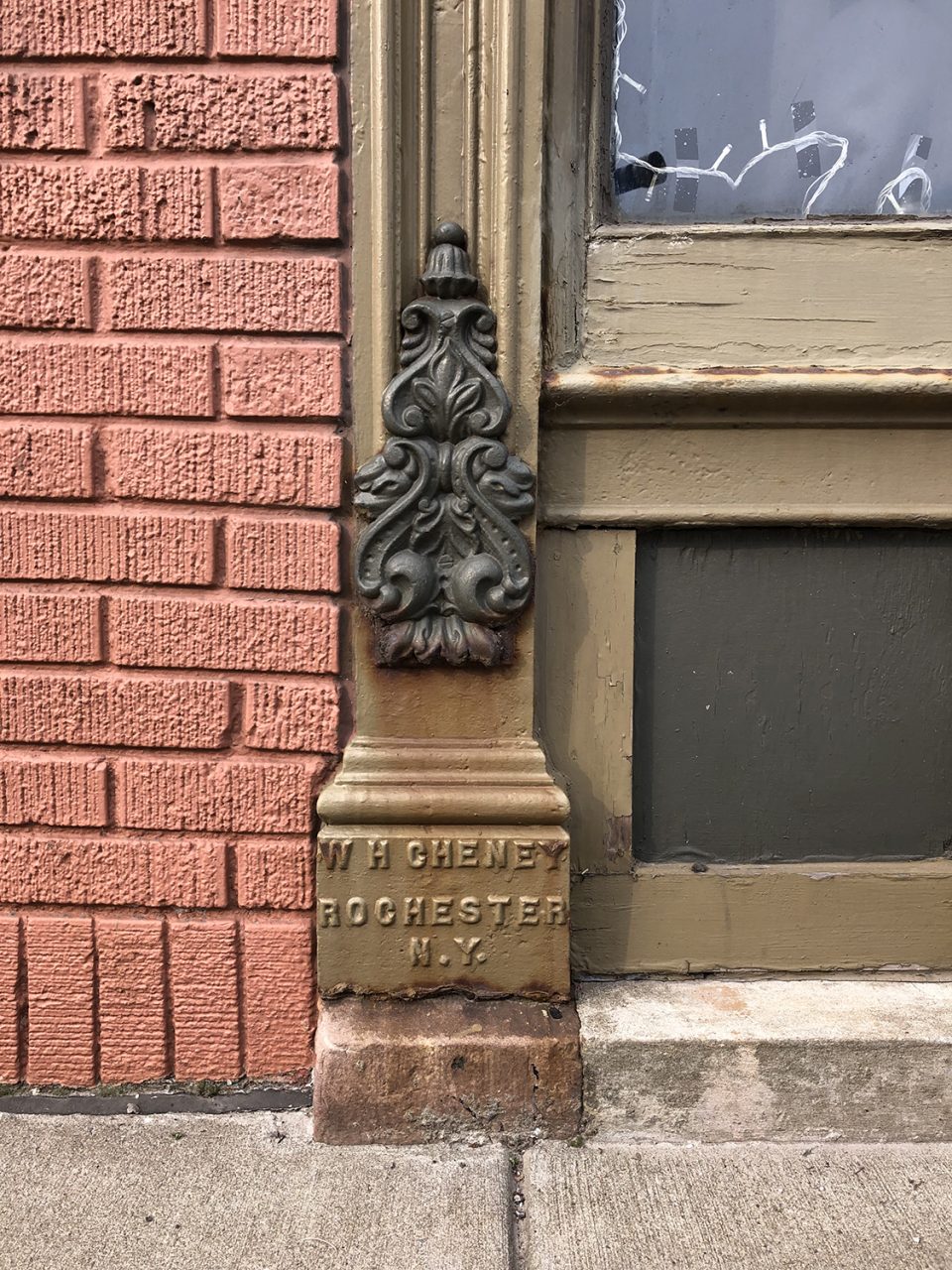
Thanks for reading.
Be sure to visit me on Facebook, Instagram or Pinterest, or on my website at keithdotson.com.
~ Keith
Sources
TN.gov (Price-Evans)
